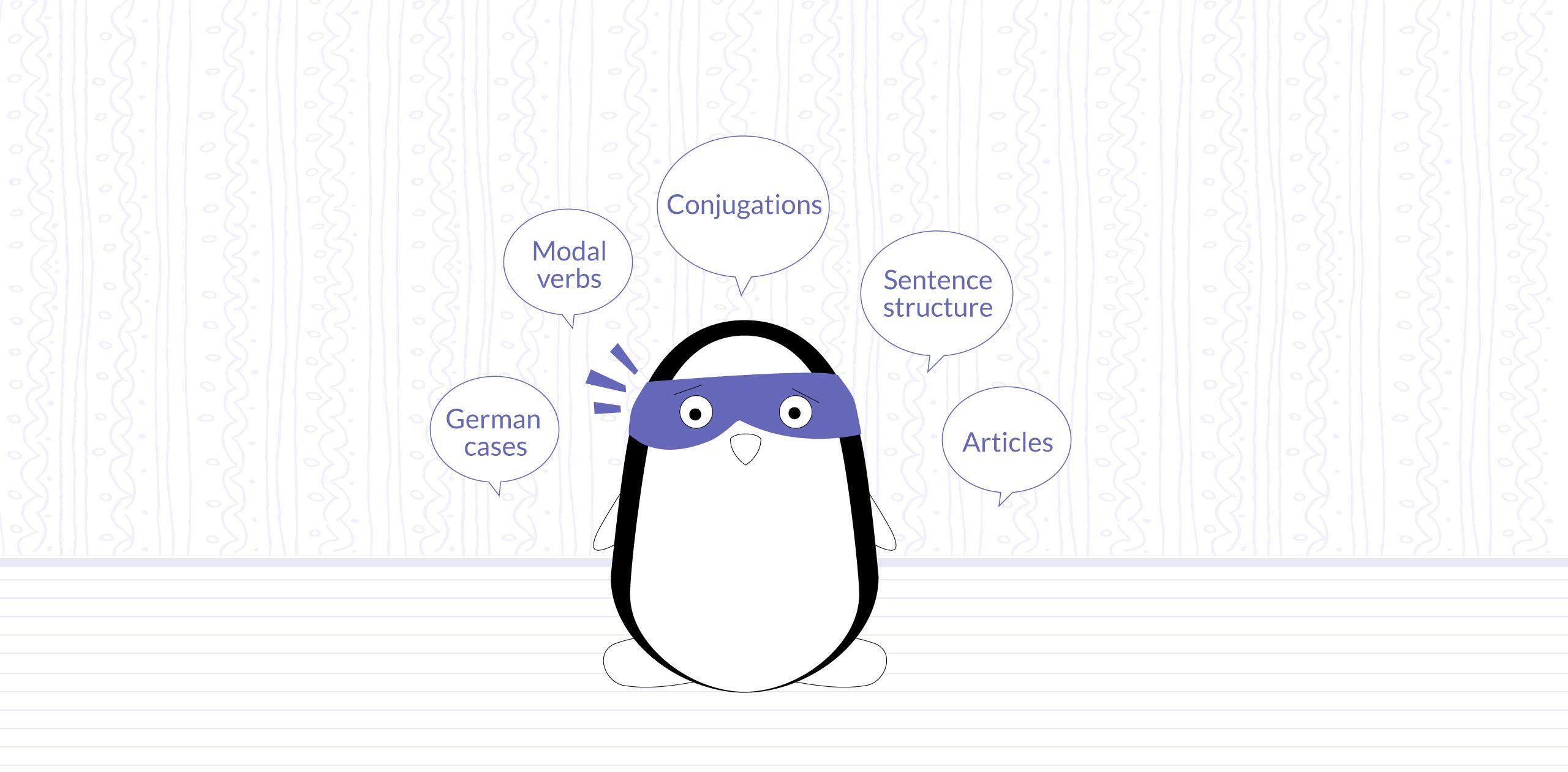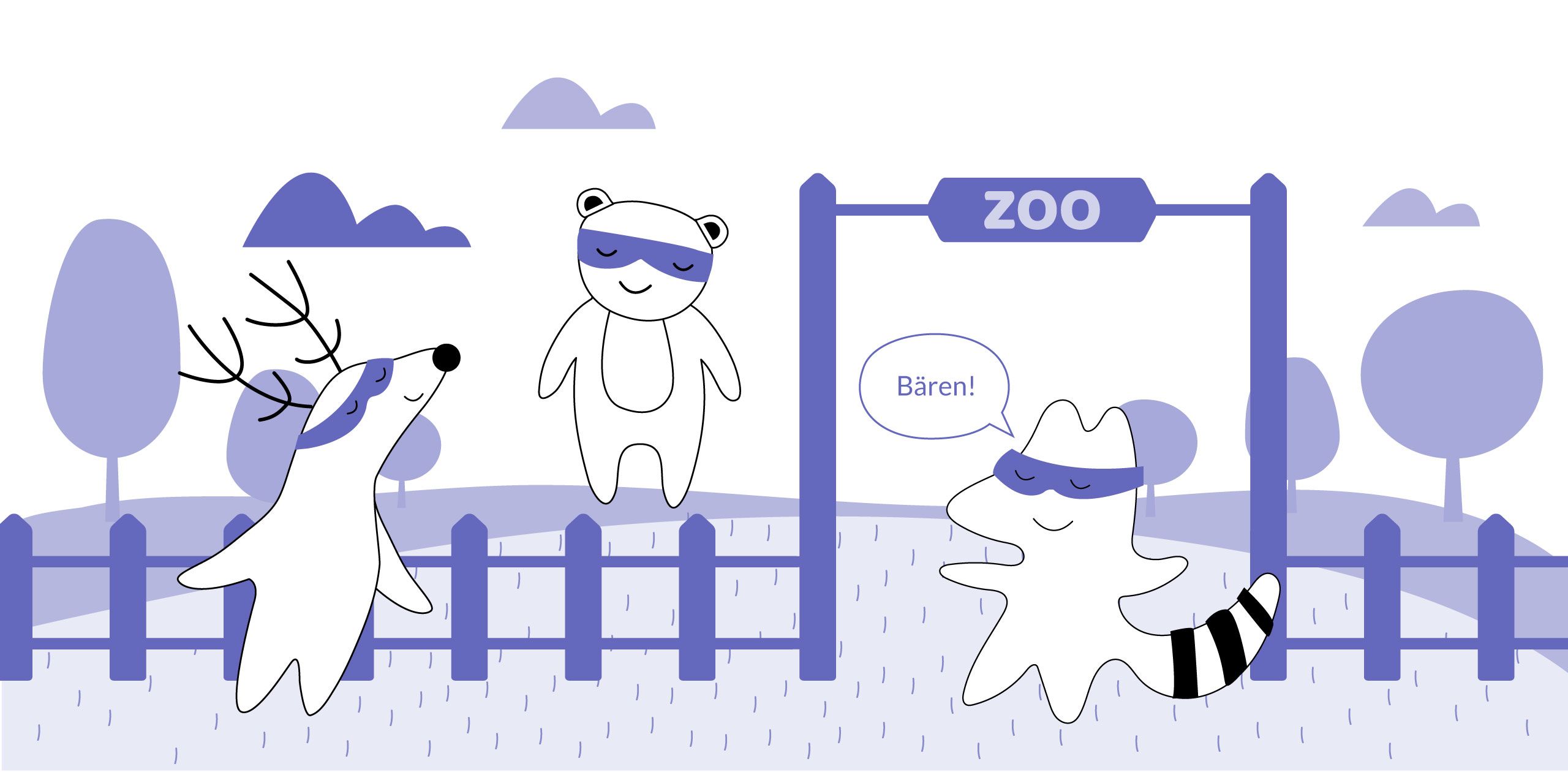
The German language has a lot of fun words for animals. In fact, the German language has some cool animal names that you will want to learn. This guide will teach you the basics of animal vocabulary in German, from Bären [bears] to Füchse [foxes].
Whether you are a beginner or an intermediate speaker of German, this guide will definitely teach you something about German pets and other animals. Read on.
Learn German with Langster
Pets – Haustiere
The German people are very passionate about their pets. Today, there are almost 35 million pets in Germany! The German language reflects this love of animals. Here is a list of some common German names for pets and their translations.
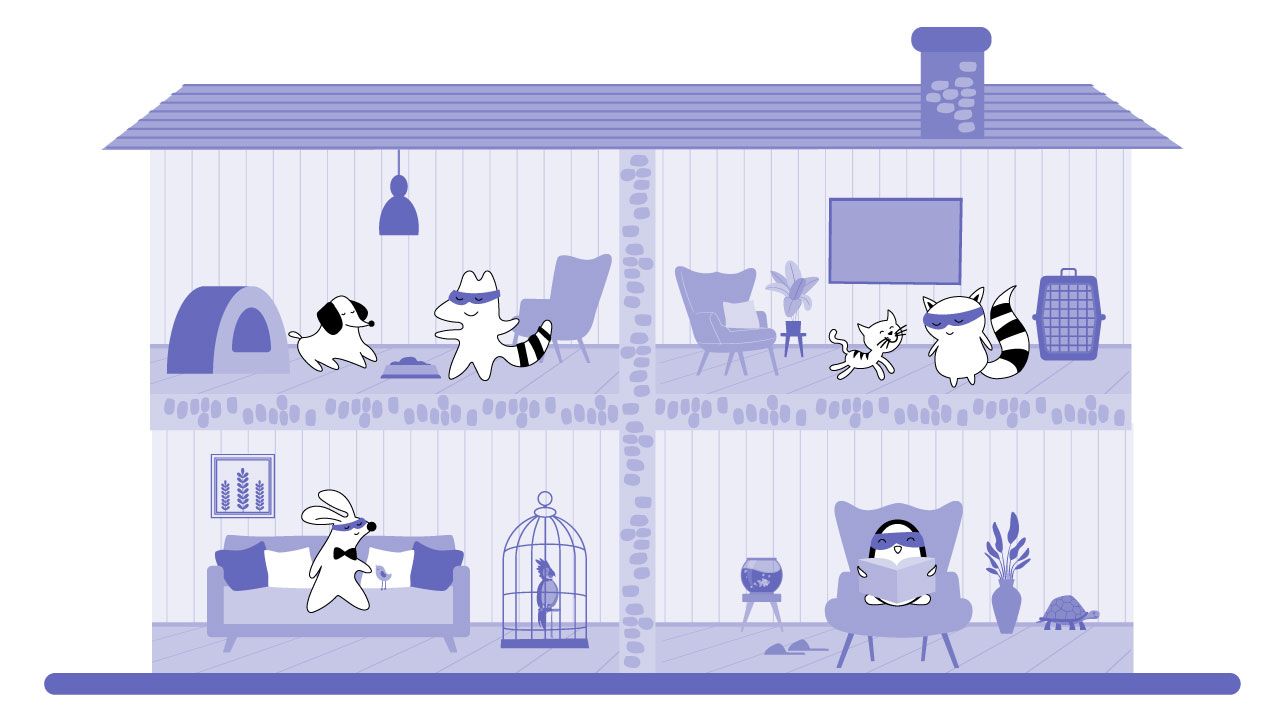
Note that there are other translations possible as well, but these are the most commonly used ones. Have fun learning them!
German
English
der Hund
the dog
die Katze
the cat
der Welpe
the puppy
der Vogel
the bird
der Fisch
the fish
der Papagei
the parrot
die Maus
the mouse
der Ratte
the rat
der Hamster
the hamster
das Kaninchen
the rabbit
das Meerschweinchen
the guinea pig
die Schlange
the snake
die Eidechse
the lizard
die Schildkröte
the turtle
Farm Animals – Nutztiere
Let’s take a look at the farmyard animals – this will help you both in daily conversations as well as in restaurants when placing an order [if you’re a meat eater, of course].
This list is by no means exhaustive, but it should give you a good start if you want to learn some of the basic words for farm animals and young animals in German.
German
English
das Schwein
the pig
die Kuh
the cow
das Kalb
the calf
das Huhn
the chicken
das Küken
the chick
das Schaf
the sheep
das Lamm
the lamb
die Ziege
the goat
das Pferd
the horse
der Esel
the donkey
die Ente
the duck
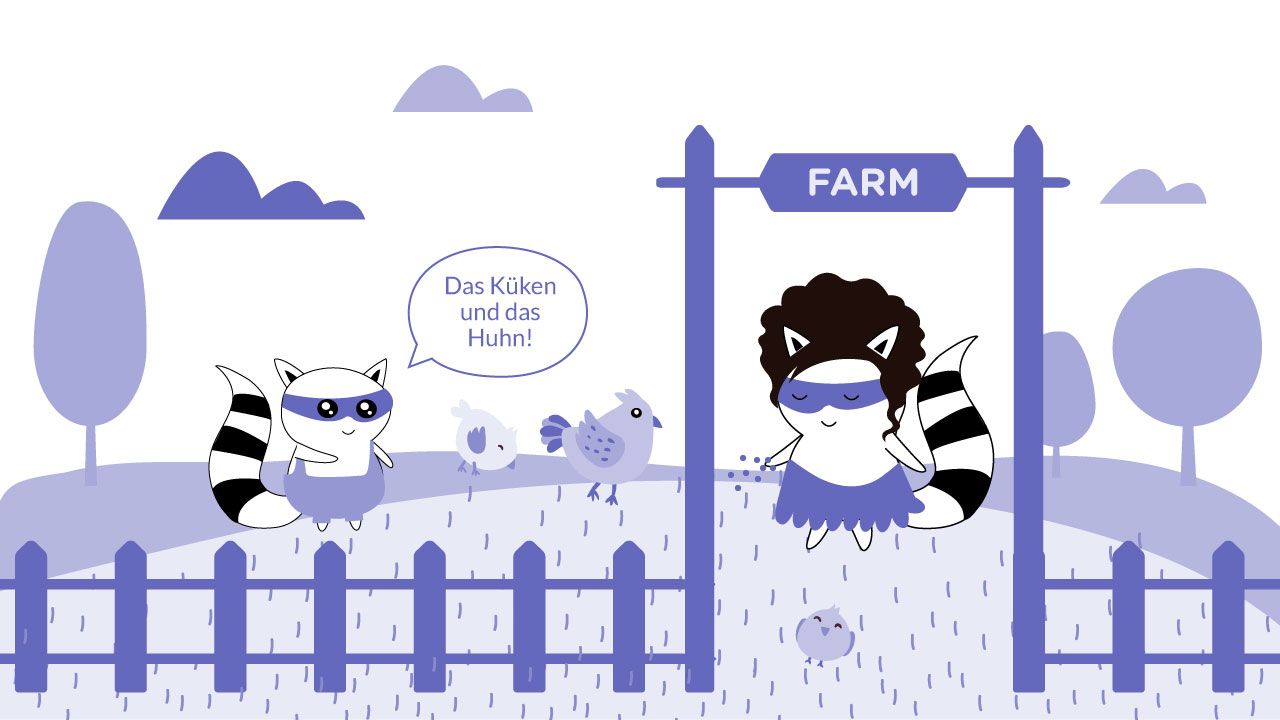
Terrestrial Wildlife – Land Wildtiere
The animals described below all live on land, so they are referred to as "land wildlife" [Landwildtiere] in the German language. Learn their names and make sure you can sound more fluent when talking to native speakers – especially when visiting a zoo.
German
English
der Hase
the jackrabbit
das Eichhörnchen
the squirrel
der Wolf
the wolf
die Fledermaus
the bat
der Igel
the hedgehog
der Hirsch
the deer, usually describes the male of the species
das Reh
the deer, usually describes the female of the species
der Bär
the bear
der Elch
the moose
die Spitzmaus
the shrew
das Wildschwein
the wild boar
These were the most commonly found wild animals in the German lands. And now, let’s take a look at more exotic animals:
German
English
der Löwe
the lion
die Giraffe
the giraffe
der Tiger
the tiger
der Elefant
the elephant
das Zebra
the zebra
der Leopard
the leopard
der Panther
the panther
der Affe
the monkey
der Gepard
the cheetah
die Antilope
the antelope
das Flusspferd
the hippopotamus
der Pavian
the baboon
das Nashorn
the rhinoceros
der Gorilla
the gorilla
das Erdmännchen
the meerkat
das Warzenschwein
the warthog
der Mungo
the mongoose
das Kamel
the camel
das Erdferkel
the aardvark

Marine Wildlife – Wasser Wildtiere
Did you know that there are around 240,000 species of animals that live in the water? In German, these creatures are known as "Wasserwildtiere," or water wildlife. Learning their names can be both informative and fun. Let's take a look at some of the most common ones.
German
English
der Otter
the otter
der Wal
the whale
der Hai
the shark
die Robbe
the seal
das Walross
the walrus
der Delfin
the dolphin
die Krabbe
the crab
der Hummer
the lobster
die Garnele
the shrimp
der Seestern
the starfish
der Seeigel
the sea urchin
der Tintenfisch
the squid
der Krake
the octopus
die Grüne Meeresschildkröte
the green sea turtle
der Stachelrochen
the stingray
der Seelöwe
the sea lion
der Pinguin
the penguin
der Narwal
the narwal
And a quick look at the pond life:
German
English
der Frosch
the frog
die Kröte
the toad
die Kaulquappe
the tadpole
der Karpfen
the carp
der Wassermolch
the newt
Flying Fauna – Fliegende Fauna
In addition to the more common English words like "bird" and "butterfly", there are also uniquely German names for various types of flying creatures. Learning these words can help you better understand and appreciate the rich biodiversity of Germany.
German
English
die Taube
the pigeon
die Elster
the magpie
der Spatz
the sparrow
die Schwalbe
the swallow
die Amsel
the blackbird
die Weiße Taube
the dove
die Eule
the owl
die Seemöwe
the seagull
die Krähe
the crow
die Gans
the goose
der Falke
the falcon
der Wellensittich
the budgie
der Geier
the vulture
der Pfau
the peacock
Insects – Insekten
All around the world, people of all ages are either fascinated or scared by insects. These tiny creatures can be found almost anywhere you look, and with a little knowledge about their names in German you will be able to better understand them.
Let’s take a look at the names of the most common insects of the German language:
German
English
die Spinne
the spider
die Ameise
the ant
die Biene
the bee
die Wespe
the wasp
die Hornisse
the hornet
die Qualle
the jellyfish
der Skorpion
the scorpion
die Giftschlange
the poisonous snake
die Spinne
the spider
die Zecke
the tick
die Mücke
the midge
der Moskito
the mosquito
die Bremse
the horse fly
die Bettwanze
the bedbug
der Käfer
the beetle
die Küchenschabe
the cockroach
German Animal Parts
Of course, when talking about different animals in German, you might want to talk about their parts, such as big horns, tails, or stingers. Here’s a short list of German animal parts you might find helpful:
German
English
der Schwanz
the tail
die Schnauze
the snout
die Pfote
the paw
die Pranke
the paw of a lion, tiger or bear
der Pelz
the animal fur
die Feder
the feather
das Gefieder
the plumage | feathering
der Stoßzahn
the tusk
das Horn
the horn
der Stachel
the stinger
How to Practice Your Animal Vocabulary
It's important to practice new vocabulary because the more you use a German word, the faster you can recall the word. Finding the right way of practicing is essential though – because if you use methods that don’t suit or interest you, there’s a low chance that you will succeed.
To practice vocabulary on German animals better, you can quiz yourself with flashcards, write out the words and recite them, or find videos or pictures online of the animals you're learning about and use them for context clues. Here are our top-3 ways to learn new vocabulary in German quickly and easily:
Use Flashcards
One tried-and-true method for learning new words is using flashcards. This is a simple way to quiz yourself on new vocabulary, and it can be adapted to fit your own needs and interests. If you’re someone who likes visual aids, then using pictures on your flashcards is a great way to learn. You can also find online flashcards apps if you prefer online learning.
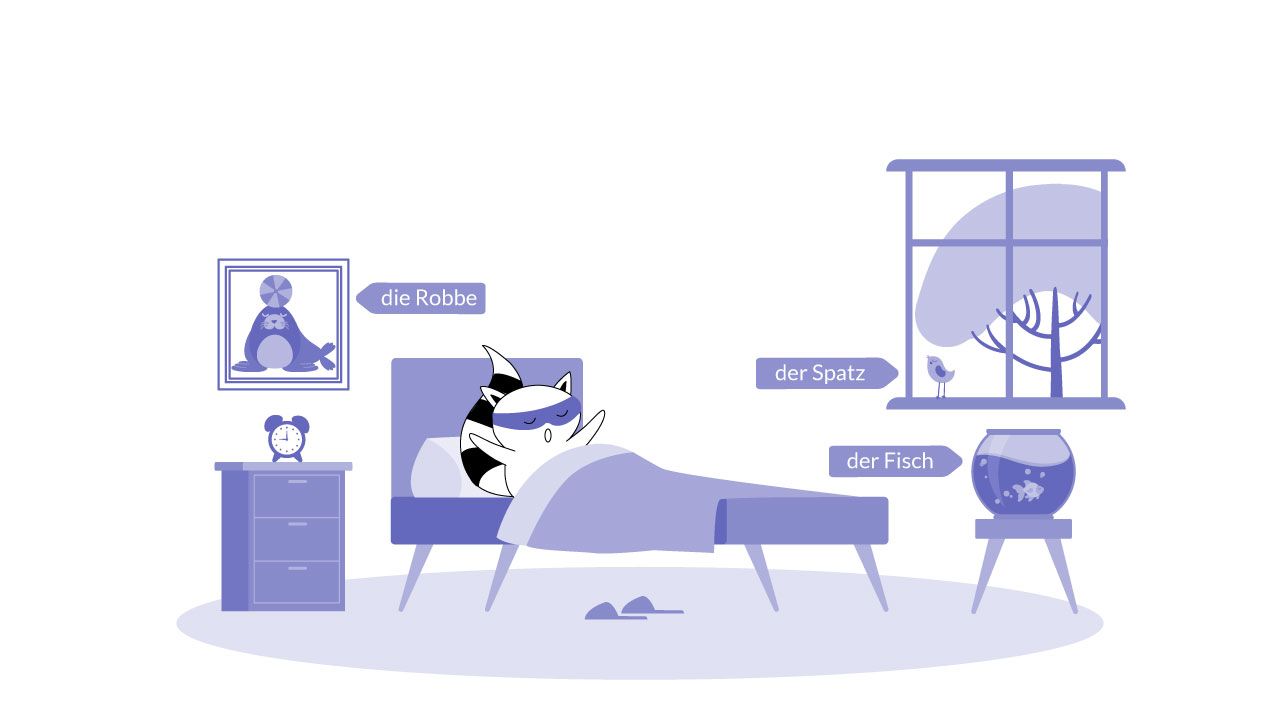
Another advantage of using flashcards is that you can carry them with you wherever you go, so you can practice any time you have a free moment. This is a great option if your schedule doesn’t allow for regular language classes or study time.
Learn the Common Words in English and German
When you’re learning a new language, it’s always helpful to learn some of the common words in that language that have similar translations in your native tongue. This way, when you come across a new word you don’t know, you can use its equivalent in English to help you figure out what it means. For those who already speak English, German comes with a few advantages.
For example, when learning about different animals in German, it’s helpful to learn some of the similar words for animals in English. This will make it easier for you to remember the new words, and it will also give you a little practice with pronunciation. After you are done with that, move to the vocabulary you will use often – for example, if you’re a dog owner, learn the common German words for dogs.
Pay Attention to Gender
As we have already mentioned, German nouns have a gender, which is either masculine, feminine or neuter. This might seem like a trivial detail, but it actually plays an important role in the language. For example, the definite article (“der, die, das”) changes depending on the gender of the noun it’s modifying.
This can be helpful when learning new animal vocabulary because you can associate a specific definite article with each gender, making it easier to remember the word. For example, the word for “lion” is Löwe in German, and it is masculine. Learn the noun together with the article – der Löwe – and this will help you remember the gender further on.
Final Thoughts on Learning German Animal Vocabulary
Learning animal vocabulary in German can be both informative and fun. There are many different words for animals in German, some of which have similar words in English, while others do not. To practice your new vocabulary, you can use flashcards, learn the common words in English and German, read German stories, and pay attention to gender.
With a little bit of practice, you will be able to fluently converse about different animals in German. And no matter what method of learning you choose, make sure you take the time to really learn and understand the meanings of these new German words – they'll come in handy on your next trip to Germany!







